Table of Contents
Beyond Labels—Why Luxury Still Rules in 2025
Fashion isn’t just about clothes—it’s about what the world chooses to notice, follow, and emulate. It lives on sidewalks and subway platforms, but it also rules the runways of Paris, the red carpets of Hollywood, and the velvet-roped exclusivity of haute couture soirées. The latter is where luxury fashion reigns—an arena where fabric becomes narrative, craftsmanship becomes legacy, and garments transform into cultural artifacts. More than fabric and thread: it’s storytelling stitched into silk, heritage woven into tweed, and innovation disguised as couture. The result? Awe-inspiring silhouettes with jaw-dropping price tags. And that, after all, is what makes it luxury fashion.
In the present times, luxury clothing has already transcended “want” and edged into “need.” For many, it is no longer about covering the body—it’s about announcing identity, signaling status, and belonging to a world where personal branding matters as much as the brand itself. A Chanel jacket or a Louis Vuitton monogram doesn’t just drape your frame; it tells the world exactly where you stand.
But what qualifies a fashion house as truly top-tier? In our countdown of the Top 20 Luxury Designer Clothing Brands in the World (2025 Edition), we looked beyond popularity. Our criteria blend heritage, innovation, influence, financial power, cultural relevance, celebrity loyalty, and resale value. These are the houses that don’t just follow trends—they set them, shape culture, and hold their value in both boutiques and the resale marketplace.
Criteria for Ranking
Our countdown is informed by:
- Heritage: Legacy and craftsmanship.
- Innovation: Design, tech, and forward-thinking approaches.
- Cultural Impact: Dominance on red carpets, Instagram feeds, or street style.
- Celebrity Love: The faces making it aspirational.
- Popularity: Consumer awareness, social following, and search demand (e.g., Gucci leads with 90% U.S. awareness per Statista).
- Sustainability: Eco-initiatives, ethical sourcing, and environmental commitments.
- Exclusivity: Scarcity, waitlists, and limited production that drive desirability.
- Resale Value: Performance on secondary markets like The Luxury Closet, Rebag, or Vestiaire Collective, where Hermès often outperforms gold.
We’ve drawn from e-commerce insights projecting 2025 trends, including a rising demand for sustainable luxury (up 15% year-over-year, according to recent reports) and exclusive pieces that appreciate in value.
The Countdown: Top Luxury Designer Clothing Brands Ranked #20 to #1
#20 Thom Browne
History to Present: Launched in 2001 in New York, Thom Browne began with a handful of suits in a small showroom. His cropped proportions and theatrical runway presentations redefined tailoring for the 21st century. By 2018, the Ermenegildo Zegna Group acquired a majority stake, fueling global expansion. The brand is known to redefine tailoring with shrunken suits, ankle-baring trousers, and uniform-inspired aesthetics. It blended avant-garde creativity with mainstream influence, even designing for the 2020 Tokyo Olympics.
Today, as a part of Zegna Group, it has expanded from men’s suiting into womenswear and accessories while maintaining a cult-like precision.
Why It’s Famous: Conceptual tailoring with an art-meets-fashion edge, scoring high on innovation and cultural impact.
Signature Styles or Collections: Grey tailored blazers, cropped trousers, pleated skirts, tweed skirts, tricolor grosgrain detailing.
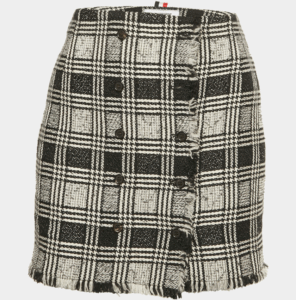
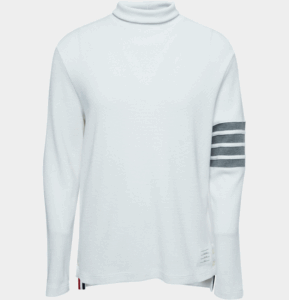
Celebs Who Wear It: LeBron James, Michelle Obama, Janelle Monáe.
Unique Value Metrics: Moderate popularity in niche circles; emerging sustainability efforts in ethical wool sourcing; exclusivity through limited-run collections.
Resale Value: Collector’s market is strong; iconic grey tailoring and Olympic pieces resell at premiums—check Thom Browne on The Luxury Closet for authenticated deals.
#19 Off-White
History to Present: Founded in 2012 by Virgil Abloh, Off-White blurred the lines between luxury and streetwear. The brand’s use of quotation marks, zip ties, and bold graphics became cultural signifiers. Following Abloh’s passing in 2021, Off-White continued under Ibrahim Kamara, maintaining its relevance through collaborations and global markets.
Why It’s Famous: The pioneer of streetwear as luxury, with strong cultural impact and innovation.
Signature Styles: Industrial-belt accents, diagonal-stripe hoodies, oversized blazers, logo T-shirts, little black dresses.
Celebs Who Wear It: Rihanna, Bella Hadid, Drake, A$AP Rocky.
Unique Value Metrics: High popularity among Gen Z (top in Lyst searches); sustainability via recycled materials in select lines; exclusivity in hyped drops.
Resale Value: Hoodies and tees resell well; sneakers dominate, but RTW holds mid-tier resale—explore Off-White products.
#18 Yohji Yamamoto
History to Present: Since the 1980s, Yohji Yamamoto has been Japan’s master of unconventional design. Launching in Tokyo and later Paris, his work embraced deconstruction, oversized silhouettes, and architectural forms. His Adidas collaboration, Y-3, brought avant-garde fashion into the mainstream of sportswear. In 2025, Yohji remains an icon of intellectual fashion, being the epitome of “poetry in black” philosophy.
Why It’s Famous: Black, billowing, poetic deconstruction, emphasizing innovation.
Signature Styles: Draped coats, asymmetrical tailoring, oversized trousers.
Celebs Who Wear It: Kanye West, John Malkovich, Tilda Swinton, Yohji Yamamoto’s global cult following in art/music.
Unique Value Metrics: Cult popularity in creative industries; sustainability through durable, timeless pieces; high exclusivity for vintage finds.
Resale Value: Vintage Yohji is highly collectible, especially coats. Besides, Y-3 sneakers retain steady demand—browse Yohji Yamamoto at The Luxury Closet.
#17 Rick Owens
History to Present: California-born Rick Owens launched his label in 1994, finding fame in Paris with his darkly romantic, rebellious style. Nicknamed the “Lord of Darkness,” Owens created a cult following with his runway theatrics and iconic sneakers. Today, he’s both a counterculture hero and a mainstream luxury presence.
Why It’s Famous: Monochrome, dystopian glamour, gothic minimalism meets high luxury, with bold cultural disruption.
Signature Styles: Leather jackets, DRKSHDW jeans, elongated tees, chunky knitwear.
Celebs Who Wear It: Kim Kardashian, Jared Leto, Rihanna, Kanye West, Zoë Kravitz, Travis Scott.
Unique Value Metrics: Rising popularity in streetwear circles; sustainability via ethical leather alternatives; exclusivity in limited editions.
Resale Value: Jackets and sneakers resell at high premiums. Experimental pieces are niche; his cult following keeps values strong—shop Rick Owens.
#16 Loewe
History to Present: Founded in Madrid in 1846 as a leather workshop, Loewe became a Spanish royal supplier and a leader in craftsmanship. Revitalized under Jonathan Anderson (appointed 2013), it now represents the peak of surrealist luxury. By 2025, Loewe is one of the most buzzed-about brands on runways and red carpets, ranking as the hottest brand on Lyst.
Why It’s Famous: Craftsmanship meets experimental art, leading in innovation and sustainability.
Signature Styles: Trompe l’oeil knits, balloon dresses, leather pants, asymmetric coats.
Celebs Who Wear It: Zendaya, Timothée Chalamet, Taylor Russell, Greta Lee.
Unique Value Metrics: High popularity (top in 2025 searches); strong sustainability with eco-leathers and upcycling; exclusivity via artisanal production.
Resale Value: Although Puzzle and Flamenco bags are highly valuable, RTW resale is growing, boosted by the cult status of Anderson’s runway pieces—link to Loewe on The Luxury Closet.
#15 Burberry
History to Present: Founded in 1856 by Thomas Burberry, the British house invented gabardine fabric and became synonymous with trench coats. Once considered “heritage-heavy,” Burberry underwent multiple rebrands. In 2022, Daniel Lee took creative lead, infusing bold color and youth-driven style into its legacy. It leads in U.S. ownership at 24%.
Why It’s Famous: The trench reinvented for modern luxury, with solid heritage.
Signature Styles: Trench coats, Burberry check scarves, outerwear.
Celebs Who Wear It: Emma Watson, Stormzy, Kate Moss.
Unique Value Metrics: Strong popularity and cultural impact; sustainability through regenerative farming; moderate exclusivity.
Resale Value: Vintage trenches and scarves retain strong resale value. Lee’s new collections are gaining traction—view Burberry products.
#14 Celine
History to Present: Founded in 1945 as a children’s shoe shop by Céline Vipiana, the brand grew into ready-to-wear by the 1960s. Phoebe Philo’s 2008–2018 minimalism gave it cult status. Since 2018, Hedi Slimane has reshaped Celine into a youth-oriented, rock-chic house. In 2025, Celine represents French cool with global star power.
Why It’s Famous: Chic minimalism to rock-nostalgia, balancing innovation.
Signature Styles: Slim tailoring, sequined dresses, sharp blazers, minimalist knitwear.
Celebs Who Wear It: BLACKPINK’s Lisa, Kaia Gerber, Harry Styles, Angelina Jolie, Hailey Bieber.
Unique Value Metrics: Growing popularity (over 50% awareness); sustainability in leather sourcing; high exclusivity for Philo-era pieces.
Resale Value: Philo-era resale is sky-high; Slimane’s Triomphe bags hold strong—explore Celine at The Luxury Closet.
#13 Versace
History to Present: Founded in 1978 by Gianni Versace, the house became known for maximalist glamour. After Gianni’s tragic death in 1997, Donatella Versace took over, preserving the brand’s bold aesthetic. In 2025, Versace continues to dominate red carpets with unapologetic Italian sensuality, climbing in Lyst rankings.
Why It’s Famous: Daring glamour and iconic prints, with cultural impact.
Signature Styles: Baroque prints, Medusa logo, chainmail dresses.
Celebs Who Wear It: Dua Lipa, Jennifer Lopez, Gigi Hadid.
Unique Value Metrics: High popularity (over 70% awareness); sustainability via eco-fabrics; exclusivity in couture.
Resale Value: Vintage Versace and signature gowns are top-tier resale performers—shop pre-loved Versace.
#12 Fendi
History to Present: Founded in Rome in 1925, Fendi began with fur and leather goods. Karl Lagerfeld transformed it into a fashion powerhouse in the 1960s. Today, Silvia Venturini Fendi and Kim Jones lead the brand, merging Roman heritage with modernity.
Why It’s Famous: Family-run heritage meets innovation, Roman opulence reimagined.
Signature Styles: FF logo outerwear, tailored coats, luxe fur (archival), sharp suits, silk blouses.
Celebs Who Wear It: Sarah Jessica Parker, Naomi Campbell, Bella Hadid.
Unique Value Metrics: Solid popularity, strong sustainability with fur-free pledges, and exclusivity in limited-edition bags.
Resale Value: The Baguette bag remains iconic; Vintage Lagerfeld-era coats and modern RTW perform strongly. Find pre-owned Fendi products.
#11 Givenchy
History to Present: Established in 1952 by Hubert de Givenchy, the house became synonymous with elegance, most notably dressing Audrey Hepburn. Since then, designers from Riccardo Tisci to Matthew Williams have kept it modern. In 2025, Givenchy continues to strike a balance between heritage couture and streetwear energy, with over 50% U.S. brand awareness.
Why It’s Famous: Parisian elegance meets modern grit.
Signature Styles: Little black dresses, gothic detailing, sharp tailoring, bold streetwear.
Celebs Who Wear It: Audrey Hepburn (forever), Beyoncé, Meghan Markle, Ariana Grande.
Unique Value Metrics: Moderate popularity; sustainability efforts in supply chain; exclusivity via couture.
Resale Value: Strongest in vintage couture, classic gowns, and tailoring retain value; RTW varies by collection—browse Givenchy.
#10 Bottega Veneta
History to Present: Founded in 1966 in Vicenza, Italy, Bottega built its reputation on intrecciato weaving. With no visible logos, it became the quiet luxury choice. Revived under Daniel Lee (2018–2021) and now Matthieu Blazy, it epitomizes minimalist chic, climbing in Lyst rankings.
Why It’s Famous: Craft over logos, embodying quiet luxury.
Signature Styles: patterned apparel, sculptural tailoring.
Celebs Who Wear It: Hailey Bieber, Jacob Elordi, Rosie Huntington-Whiteley.
Unique Value Metrics: Rising popularity; sustainability through artisanal craftsmanship; high exclusivity with waitlists.
Resale Value: Bags are resale staples, RTW gaining momentum—check pre-owned Bottega Veneta on The Luxury Closet.
#9 Valentino
History to Present: Founded in 1960 by Valentino Garavani, the Italian house quickly gained recognition for its couture gowns and the distinctive “Valentino red.” Today, under Pierpaolo Piccioli, it is both daring and poetic, making waves with monochrome collections.
Why It’s Famous: Couture meets modern romanticism.
Signature Styles: Rockstuds, couture gowns, Valentino Pink.
Celebs Who Wear It: Florence Pugh, Anne Hathaway, Lady Gaga.
Unique Value Metrics: Strong cultural impact; sustainability in fabric innovation; exclusivity in couture lines.
Resale Value: Couture gowns and Rockstud accessories have enduring resale strength—explore pre-owned Valentino.
#8 Balenciaga
History to Present: Founded in Spain in 1917 by Cristóbal Balenciaga, revered as “the master of us all” by Dior. Revived in the 2000s, Balenciaga, under Demna, is now edgy, polarizing, and wildly influential. Despite controversies, it remains one of fashion’s most discussed brands, with a 15% U.S. ownership stake.
Why It’s Famous: Radical design, cultural disruption.
Signature Styles: Oversized hoodies, Triple S sneakers, tailoring.
Celebs Who Wear It: Kim Kardashian, Justin Bieber, Cardi B.
Unique Value Metrics: High popularity in youth demographics; sustainability via upcycled collections; exclusivity in viral drops. Resale Value: Sneakers and bags dominate the resale market; runway pieces vary—shop pre-loved Balenciaga products.
#7 Saint Laurent (YSL)
History to Present: Founded in 1961 by Yves Saint Laurent and Pierre Bergé, YSL revolutionized fashion with the Le Smoking tuxedo for women. After decades of evolution, Anthony Vaccarello now drives its sleek Parisian identity.
Why It’s Famous: Sharp tailoring, Parisian chic, with timeless innovation.
Signature Styles: Le Smoking tuxedo, sharp leather jackets, short hemlines.
Celebs Who Wear It: Zoë Kravitz, Harry Styles, Hailey Bieber.
Unique Value Metrics: Consistent popularity; sustainability in ethical sourcing; exclusivity through heritage pieces. Resale Value: Consistently high for bags and leather jackets—link to Saint Laurent at The Luxury Closet.
#6 Dior
History to Present: Founded in 1946 by Christian Dior, the house revolutionized post-war fashion with the “New Look.” Now, with Maria Grazia Chiuri (women’s) and Kim Jones (men’s), Dior is both timeless and street-relevant, ranking #6 in Brand Finance’s list of the most valuable luxury brands.
Why It’s Famous: Couture heritage, reinvented.
Signature Styles: Bar jackets, embroidered gowns, sleek suits.
Celebs Who Wear It: Jennifer Lawrence, BLACKPINK’s Jisoo, Charlize Theron, Natalie Portman, Robert Pattinson.
Unique Value Metrics: High popularity (top in awareness); sustainability with timeless designs reducing waste; exclusivity in couture.
Resale Value: Bar jackets and couture gowns hold strong resale—browse Dior.
#5 Prada
History to Present: Founded in Milan in 1913 by Mario Prada, the house gained fame for its leather goods. In the 1980s, Miuccia Prada revolutionized the brand with nylon bags and an intellectual minimalist aesthetic. Now co-led by Raf Simons, Prada remains at the cutting edge, topping Lyst’s Q1 2025.
Why It’s Famous: Smart minimalism with cultural emphasis.
Signature Styles: Triangle-logo blazers, Nylon skirts, boxy tailoring, intellectual knits.
Celebs Who Wear It: Hunter Schafer, Dua Lipa, Benedict Cumberbatch.
Unique Value Metrics: Strong popularity; leading sustainability initiatives like recycled nylon; exclusivity in collaborations.
Resale Value: Nylon classics and runway pieces hold strong demand—shop Prada products.
#4 Hermès
History to Present: Founded in 1837 as a Parisian saddlery, Hermès has remained family-owned and fiercely protective of its heritage. Known for its craftsmanship and scarcity-driven exclusivity, the brand’s RTW complements its leather icons. It ranks #4 in Brand Finance 2025.
Why It’s Famous: Quiet luxury and timeless exclusivity.
Signature Styles: Equestrian-inspired RTW, silk scarves, silk blouses, tailored coats.
Celebs Who Wear It: Jane Birkin, Cate Blanchett, Julianne Moore, Victoria Beckham, Kim Kardashian, Meghan Markle.
Unique Value Metrics: Elite popularity; sustainability through durable, heirloom-quality items; top exclusivity with Birkin waitlists.
Resale Value: The strongest in luxury resale—Birkins and Kellys outperform gold—RTW resale is modest compared to bags, but tailoring maintains value. Explore pre-owned Hermès on The Luxury Closet.
#3 Chanel
History to Present: Founded in 1910 by Gabrielle “Coco” Chanel, the house liberated women from corsets and defined timeless style. Karl Lagerfeld led from 1983 to 2019; now Virginie Viard carries the torch. Chanel tops Brand Finance’s fashion-specific ranking at #2 overall.
Why It’s Famous: Icons from tweed to the little black dress.
Signature Styles: Tweed suits, little black dresses, camellia motifs.
Celebs Who Wear It: Margot Robbie, Kristen Stewart, Penélope Cruz.
Unique Value Metrics: High popularity (90% awareness); sustainability in timeless wardrobes; ultimate exclusivity via couture.
Resale Value: Chanel bags and vintage RTW consistently lead the market—link to pre-owned Chanel products.
#2 Gucci
History to Present: Founded in 1921 by Guccio Gucci in Florence as a leather goods workshop. Revived under Tom Ford in the ’90s, then Alessandro Michele’s maximalist reign, and now Sabato De Sarno’s sleek refinement. In 2025, Gucci balances heritage with cultural dominance, achieving a 45% share of U.S. popularity.
Why It’s Famous: Italian flair, reinvention across eras.
Signature Styles: Tailored suits, logo knits, flowing dresses, statement RTW.
Celebs Who Wear It: Harry Styles, Dakota Johnson, Billie Eilish.
Unique Value Metrics: Top popularity; sustainability leader with eco-lines; exclusivity in limited releases.
Resale Value: Monogram classics and Michele-era collectibles command strong resale—browse Gucci at The Luxury Closet.
#1 Louis Vuitton
History to Present: Founded in 1854 in Paris as a trunk-maker, LV built its empire on travel luxury. Under Marc Jacobs in the 1990s, it became a fashion powerhouse. Today, with Pharrell helming menswear and Ghesquière on womenswear, LV is the world’s top luxury brand by revenue and influence, holding #1 in Vogue Business Index and #3 in Brand Finance.
Why It’s Famous: From heritage trunks to global dominance.
Signature Styles: Monogram-infused product lines, high-fashion RTW, futuristic tailoring, sequined dresses.
Celebs Who Wear It: Rihanna, Zendaya, BTS.
Unique Value Metrics: Unrivaled popularity (45% U.S. favorability); sustainability via upcycled collections; exclusivity in collaborations.
Resale Value: Unmatched—Louis Vuitton monogram is the most bankable resale bet—shop pre-owned Louis Vuitton.
Emerging Brands to Watch (Zig When Others Zag!)
Emerging Brands to Watch in 2025
While heritage houses dominate, the future of luxury is also being written by daring disruptors. These are the names that zig when others zag—challenging traditions, rethinking craftsmanship, and reshaping what luxury means to a new generation. One common thread? They understand that modern luxury must be as comfortable to wear as it is covetable.
Jacquemus
From lavender fields in Provence to front-row buzz in Paris, Simon Porte Jacquemus has redefined youthful luxury. Known for playful proportions (the mini Chiquito bag) and sun-soaked minimalism, Jacquemus creates breezy silhouettes that feel as effortless as they look. Comfort and elegance walk hand in hand in his Mediterranean-inspired world.
Acne Studios
What began in Stockholm in 1996 as a creative collective making jeans has grown into one of the world’s most influential cool-kid labels. Acne Studios embodies Scandinavian minimalism with an artistic twist, characterized by structured tailoring, oversized knits, and subversive denim. Its relaxed proportions and innovative fabrics prove that style can thrive without stiffness.
Marine Serre
The Parisian visionary, often referred to as the queen of eco-futurism, is instantly recognizable for her distinctive crescent moon motif. Since launching her label in 2017, Serre has embraced upcycling, performance wear, and hybrid couture. Her collections often fuse athletic ease with avant-garde shapes, making sustainability and comfort integral to the future of luxury.
The Row
Founded in 2006 by Mary-Kate and Ashley Olsen, The Row has matured into the definition of quiet luxury. With monastic tailoring, minimalist knitwear, and flawless fabrics, it has become a discreet power player. Its pieces are designed not to shout but to envelop the wearer in ease and refinement—luxury as a second skin.
✨ These emerging forces prove that while heritage houses guard tradition, the next era of luxury belongs to those who innovate with authenticity, cultural resonance, and wearability. In 2025, luxury is no longer a trade-off between elegance and comfort—it’s the union of both.
But there’s another truth worth noting: Luxury brands are rarely defined by apparel alone. Bags, shoes, and accessories can be just as critical—sometimes more so—in shaping their identity and resale power. Hermès, for instance, established its dominance with the Birkin and Kelly long before ready-to-wear became a relevant category. Off-White’s sneakers have eclipsed its clothing on resale charts. These signature items don’t just complement collections; they anchor a brand’s cultural relevance, exclusivity, and financial performance.
Luxury Is More Than Clothes—Apparel vs. Accessories
While our ranking celebrates the world’s top luxury clothing brands, it’s essential to recognize that not every house is equally coveted for apparel. For Hermès and Louis Vuitton, leather goods are the crown jewels. Similarly, for Christian Louboutin or Manolo Blahnik, it’s footwear. In today’s market, categories blur—bags, shoes, and apparel all interweave to define the influence of luxury. It’s time to reflect on this reality, spotlighting houses whose power extends beyond wardrobes.
To help you navigate the investment side of style, here’s a comparative table of each brand’s most sought-after product. Sourced from trusted resale platforms like The Luxury Closet, Rebag, and Vestiaire Collective, the data reveals how original prices compare to 2025 resale ranges—shedding light on which labels truly reward the savvy collector.
TABLE TO BE INSERTED From The Doc
| Brand | Iconic Product | Product Image | Original Price (AED. Approx.) | Resale Value Range (AED, 2025) | %Resale Range |
| Louis Vuitton | Monogram Speedy 30 | 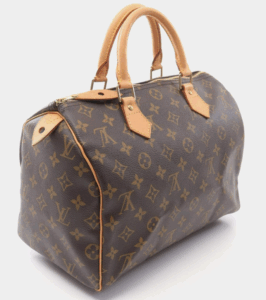 |
5,500 | 4,000–6,500 | –27.3% to +18.2% |
| Gucci | GG Marmont Mini Bag | 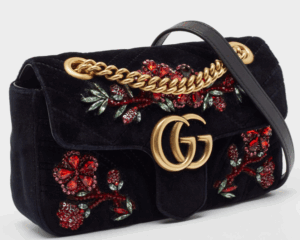 |
7,200 | 5,000–8,000 | –30.6% to +11.1% |
| Chanel | Classic Flap Bag (Medium) | 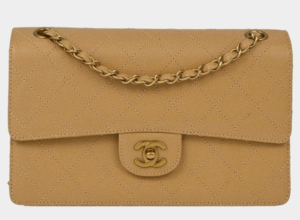 |
35,000 | 30,000–45,000 | –14.3% to +28.6% |
| Hermès | Birkin 30 (Togo Leather) | 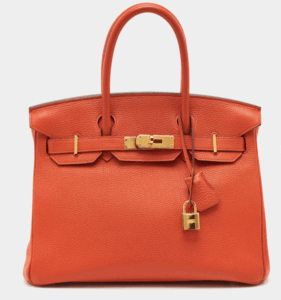 |
80,000 | 90,000–150,000 | +12.5% to +87.5% |
| Prada | Re-Edition 2005 Nylon Bag | 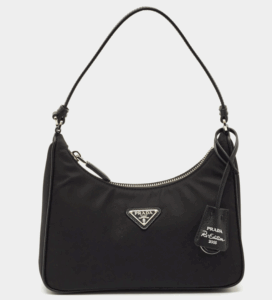 |
6,000 | 4,500–7,000 | –25.0% to +16.7% |
| Dior | Saddle Bag | 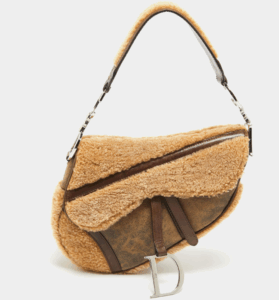 |
15,000 | 12,000–18,000 | –20.0% to +20.0% |
| Saint Laurent | Sac de Jour Small | 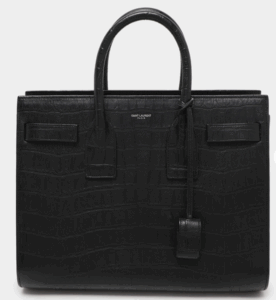 |
12,000 | 9,000–13,000 | –25.0% to +8.3% |
| Balenciaga | City Bag | 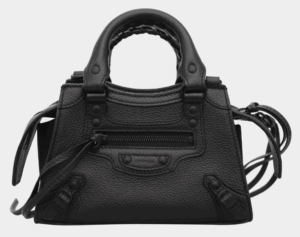 |
6,000 | 4,500–7,000 | –29.4% to +5.9% |
| Valentino | Rockstud Spike Bag | 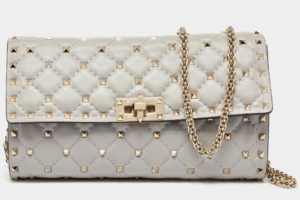 |
9,000 | 6,500–10,000 | –27.8% to +11.1% |
| Bottega Veneta | Cassette Bag | 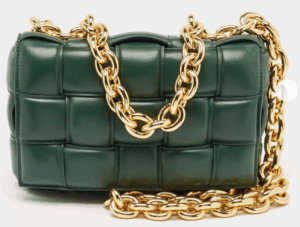 |
10,000 | 8,000–12,000 | –20.0% to +20.0% |
| Givenchy | Antigona Small Bag | 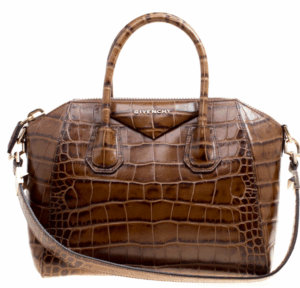 |
8,000 | 5,500–7,500 | –31.3% to –6.3% |
| Fendi | Baguette Bag | 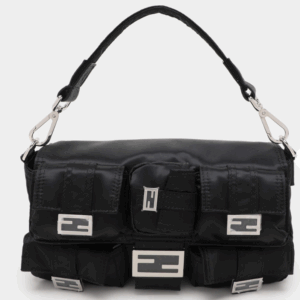 |
12,000 | 9,000–14,000 | –25.0% to +16.7% |
| Versace | La Medusa Small Bag | 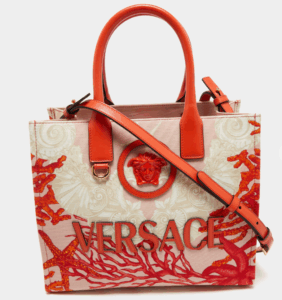 |
4,500 | 3,000–4,500 | –33.3% to 0.0% |
| Celine | Triomphe Bag | 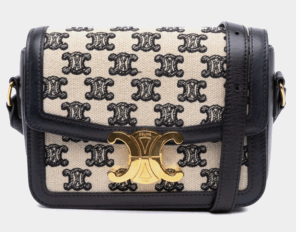 |
13,000 | 10,000–15,000 | –23.1% to +15.4% |
| Burberry | Vintage Trench Coat | 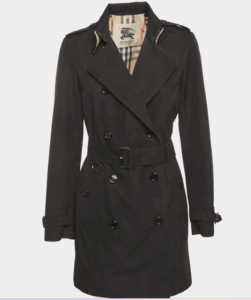 |
5,000 | 2,000–4,500 | –33.3% to –5.6% |
| Loewe | Puzzle Bag | 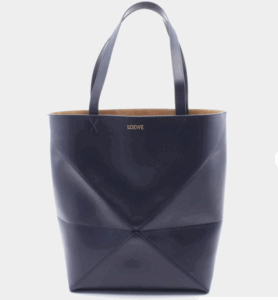 |
11,000 | 9,000–13,000 | –18.2% to +18.2% |
| Rick Owens | Draped Leather Jacket | 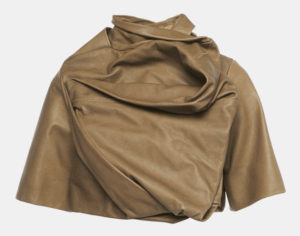 |
4,000 | 1,500–4,500 | –28.6% to +7.1% |
| Yohji Yamamoto | Vintage Draped Coat | 6,000 | 4,500–6,500 | –25.0% to +8.3% | |
| Off-White | Out of Office Sneakers | 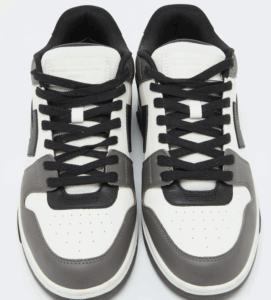 |
2,500 | 2,000–3,500 | –20.0% to +40.0% |
| Thom Browne | Grey Tailored Blazer | 5,500 | 4,000–5,500 | –27.3% to 0.0% |
Image Sources:
Note: Resale values vary based on condition, rarity, and market demand. Prices are approximate and sourced from 2025 secondary market trends.
FAQs
- Which luxury brand has the best resale value?
Hermès consistently dominates the resale market, with Birkin and Kelly bags often selling for more than their original retail prices. Chanel comes in a close second, especially with its iconic flap bags. Louis Vuitton also maintains strong resale performance thanks to its timeless monogram and consistent global demand. - Is Chanel more exclusive than Louis Vuitton?
Yes—Chanel cultivates exclusivity with limited production, strict boutique experiences, and frequent price increases. Louis Vuitton, although luxurious, offers a more widely available product range. Both are status symbols, but Chanel is often perceived as the “quieter,” more elite choice. - Which luxury clothing brand is the most innovative right now?
Loewe under Jonathan Anderson is leading in creativity, with surrealist designs and clever use of materials. Balenciaga continues to disrupt with conceptual runway shows, while Prada’s fusion of minimalism and futurism sets new standards for design. - Are luxury clothes really worth the investment?
Yes, but selectively. Pieces from heritage houses like Hermès, Chanel, and Louis Vuitton hold long-term value. Limited-edition collections, celebrity-worn runway looks, and cult classics often appreciate in resale markets, making them both stylish and financially savvy. - Which luxury brand is most popular with celebrities in 2025?
Louis Vuitton dominates global red carpets and tours, with ambassadors like Zendaya, Rihanna, and BTS. Gucci remains a celebrity favorite across music and film, while Saint Laurent’s sleek tailoring makes it a go-to for Hollywood’s A-list. - What’s the difference between luxury and “quiet luxury”?
Luxury is about bold branding, status, and high visibility—think logo-heavy Gucci or Versace. Quiet luxury is understated, logo-free, and all about impeccable craftsmanship—brands like Hermès, Bottega Veneta, and Loro Piana excel here. - Which emerging luxury brands should I watch in 2025?
Jacquemus, Acne Studios, and Marine Serre are reshaping luxury with youthful, sustainable, and avant-garde approaches. These labels are not yet at Hermès or Chanel levels, but they’re influencing fashion conversations and resale markets at lightning speed.
Luxury That Is Stylish, Yet Comfortable; Smart, Yet Sustainable
The biggest shift in 2025? Luxury that not only looks good but also feels good. Houses like Bottega Veneta, Loewe, and Celine are leading the charge with wearable silhouettes—soft knits, fluid tailoring, and sneakers that transition seamlessly from fashion week to airport lounges. E-commerce data even shows a 20% surge in comfort-driven luxury purchases, proving that elegance and ease are no longer opposites but perfect partners.
And when it comes to making these smart investments, buying new is no longer the only option. Platforms like The Luxury Closet offer authenticated, preloved pieces from the very houses defining this new era of stylish comfort—at a fraction of the retail price. Whether it’s a Burberry Trench, Bottega bag, a Loewe Puzzle, or a Celine Triomphe, you can shop with confidence knowing experts have verified each piece.
What Luxury Means in 2025: Come To The Luxury Closet To Find Out
Luxury today is bigger than heritage. It’s cultural relevance, sustainability, and investment value rolled into one. Whether it’s Hermès’ timeless exclusivity, Chanel’s couture dominance, or Louis Vuitton’s global juggernaut status, these brands define how the world dresses, accessorizes, and even invests—turning clothing into art, culture, and identity.
At The Luxury Closet, we help you access this world with data-backed insights and authenticated, pre-loved pieces that retain their value. Ready to shop smarter, sustainably, and with style? Explore our curated brand collections and own luxury that lasts.


